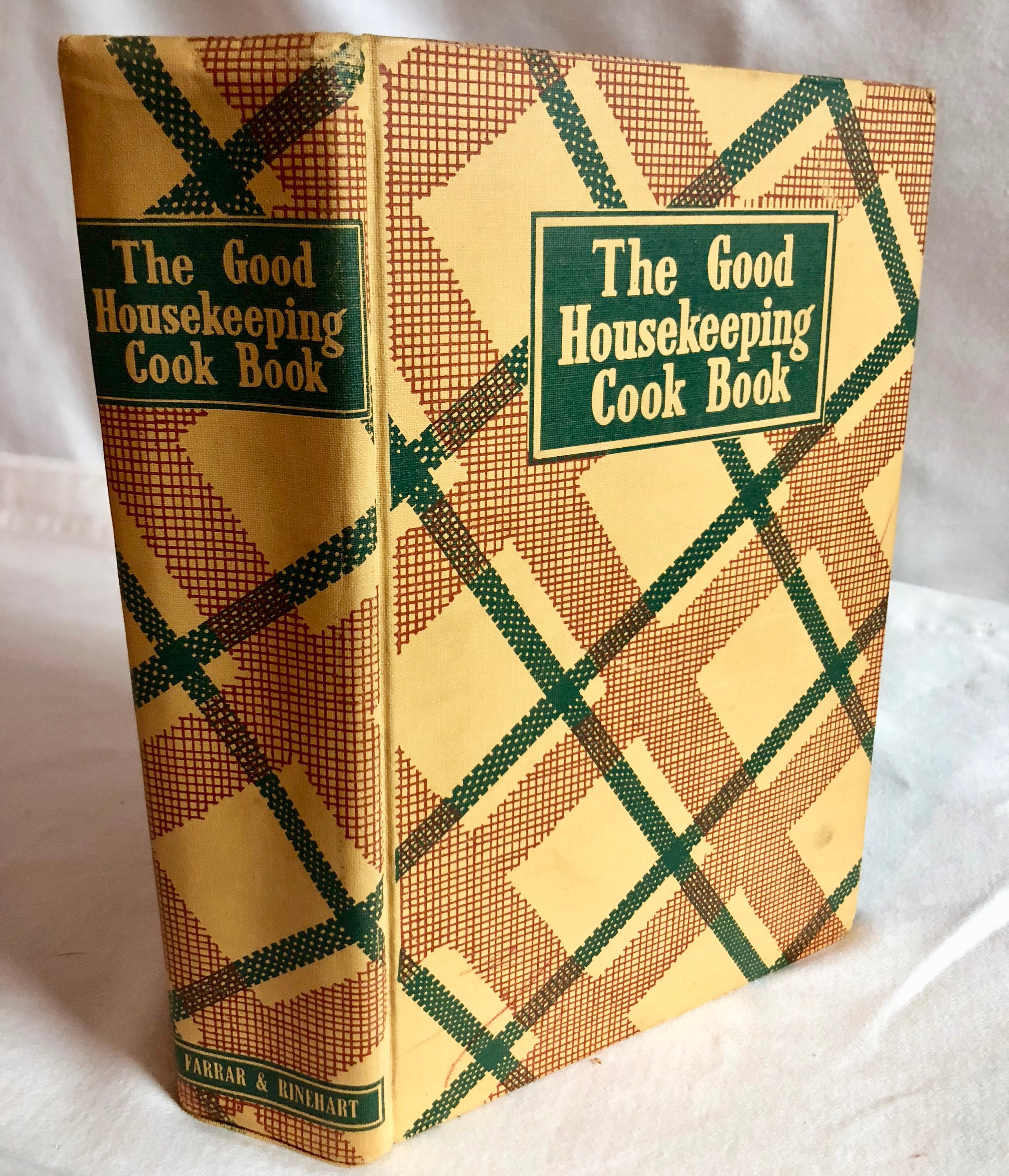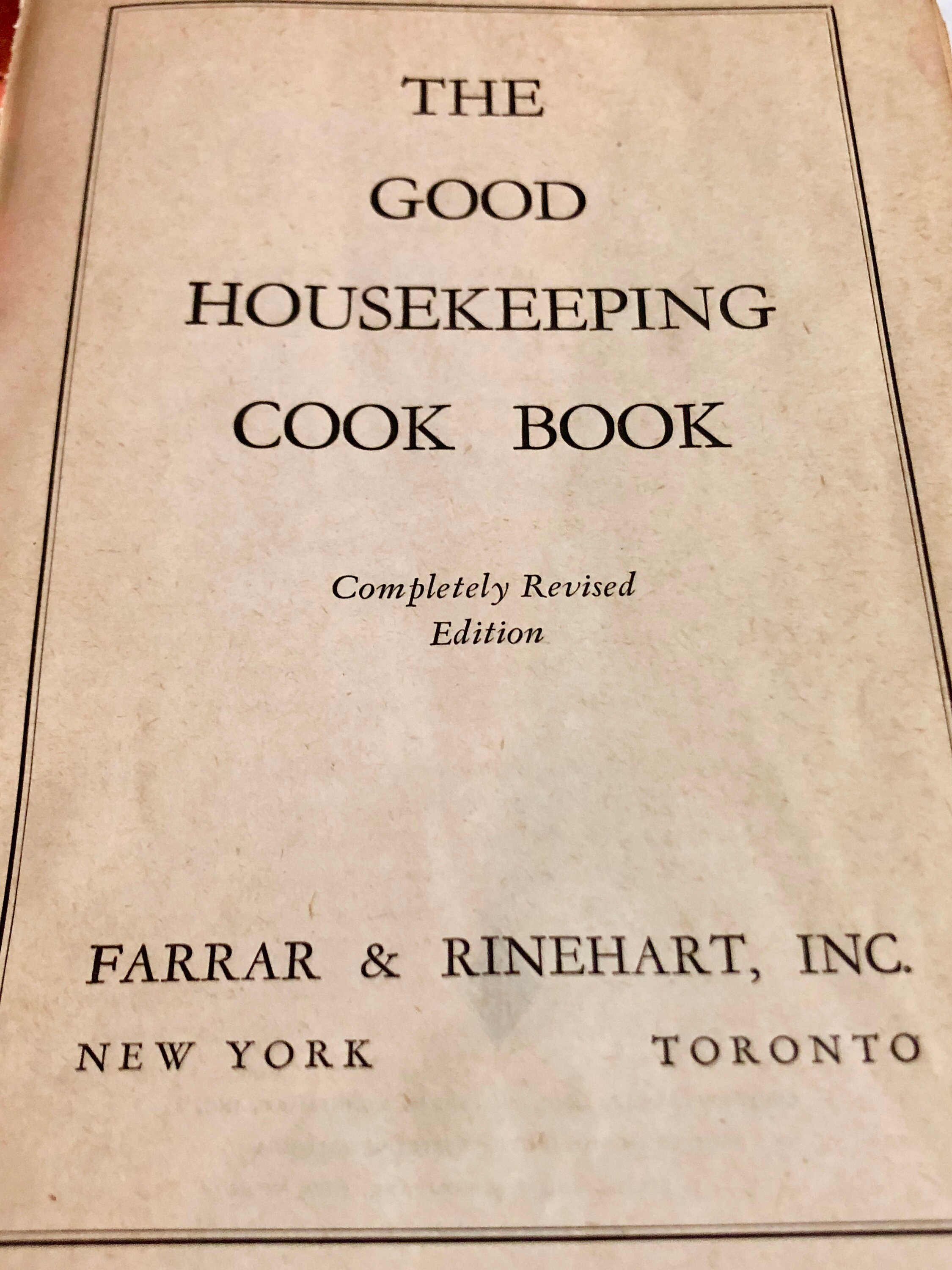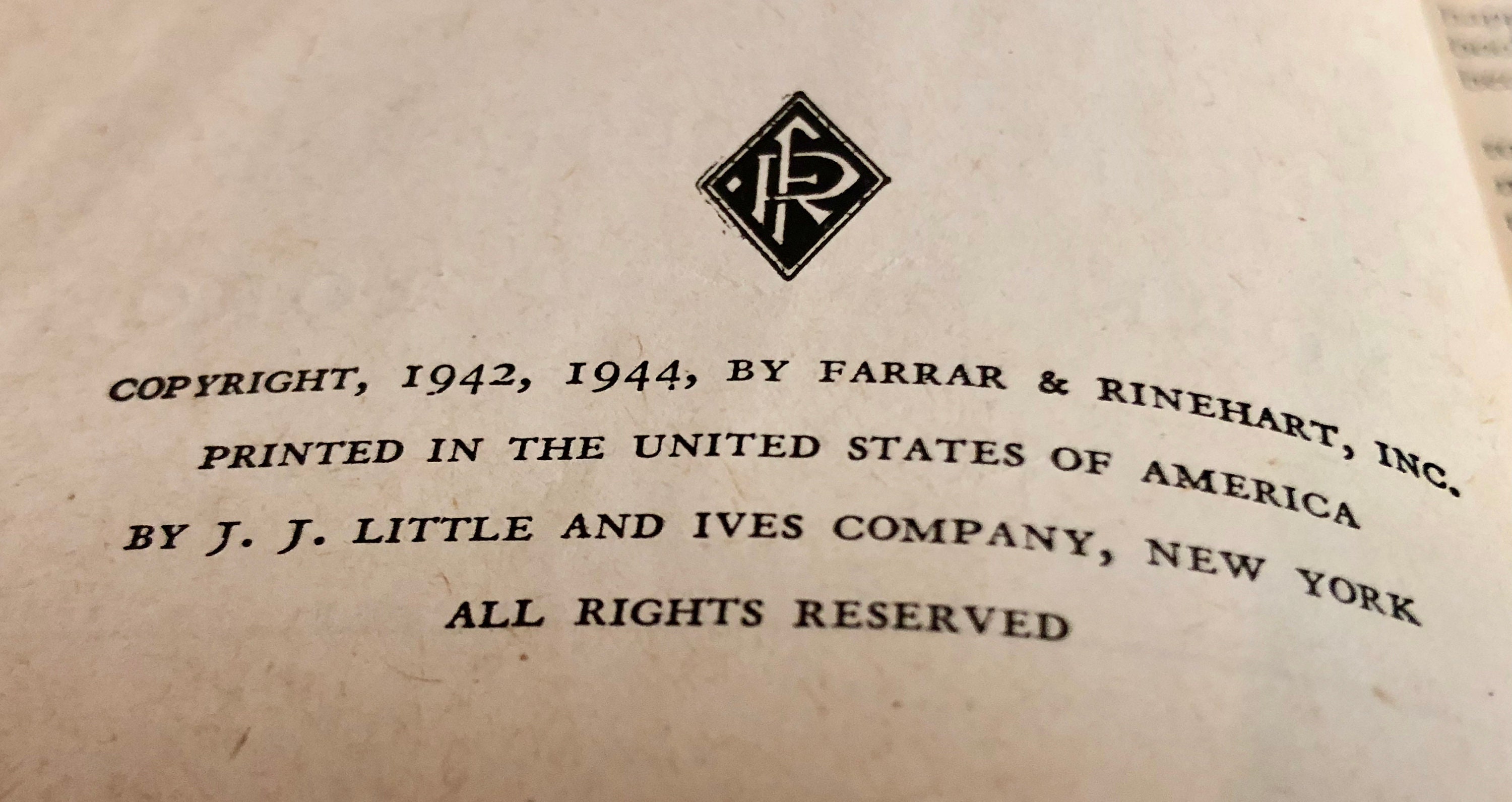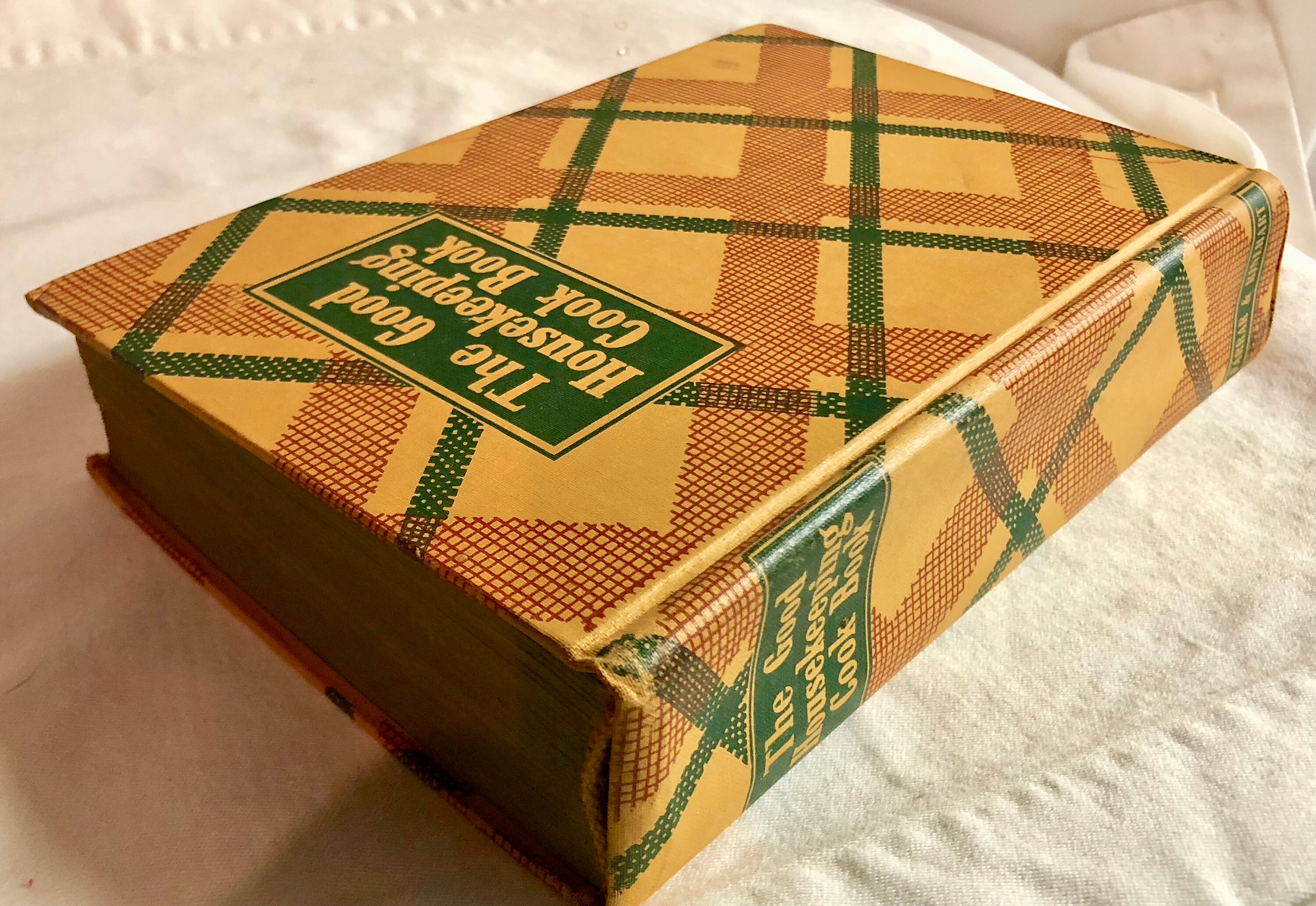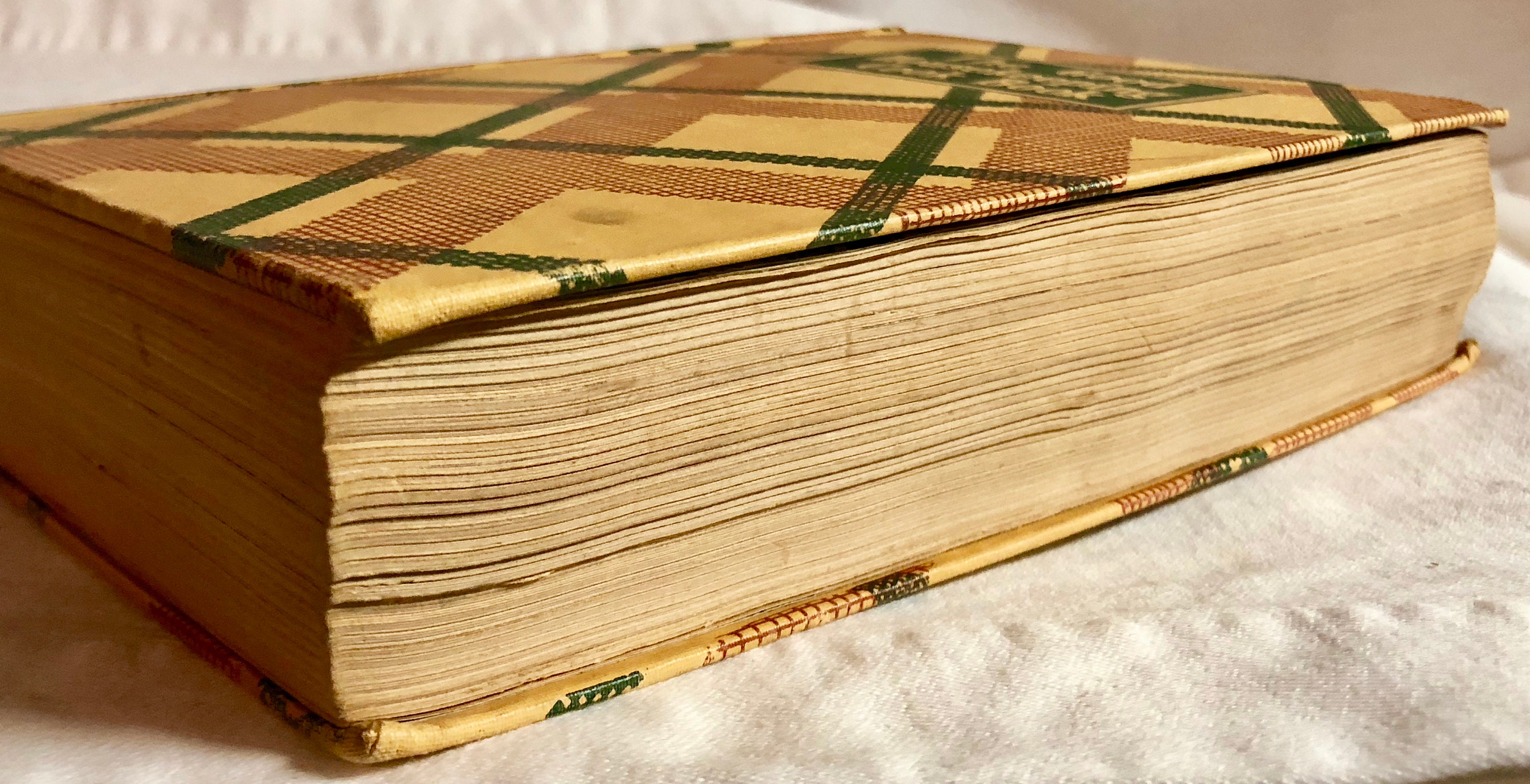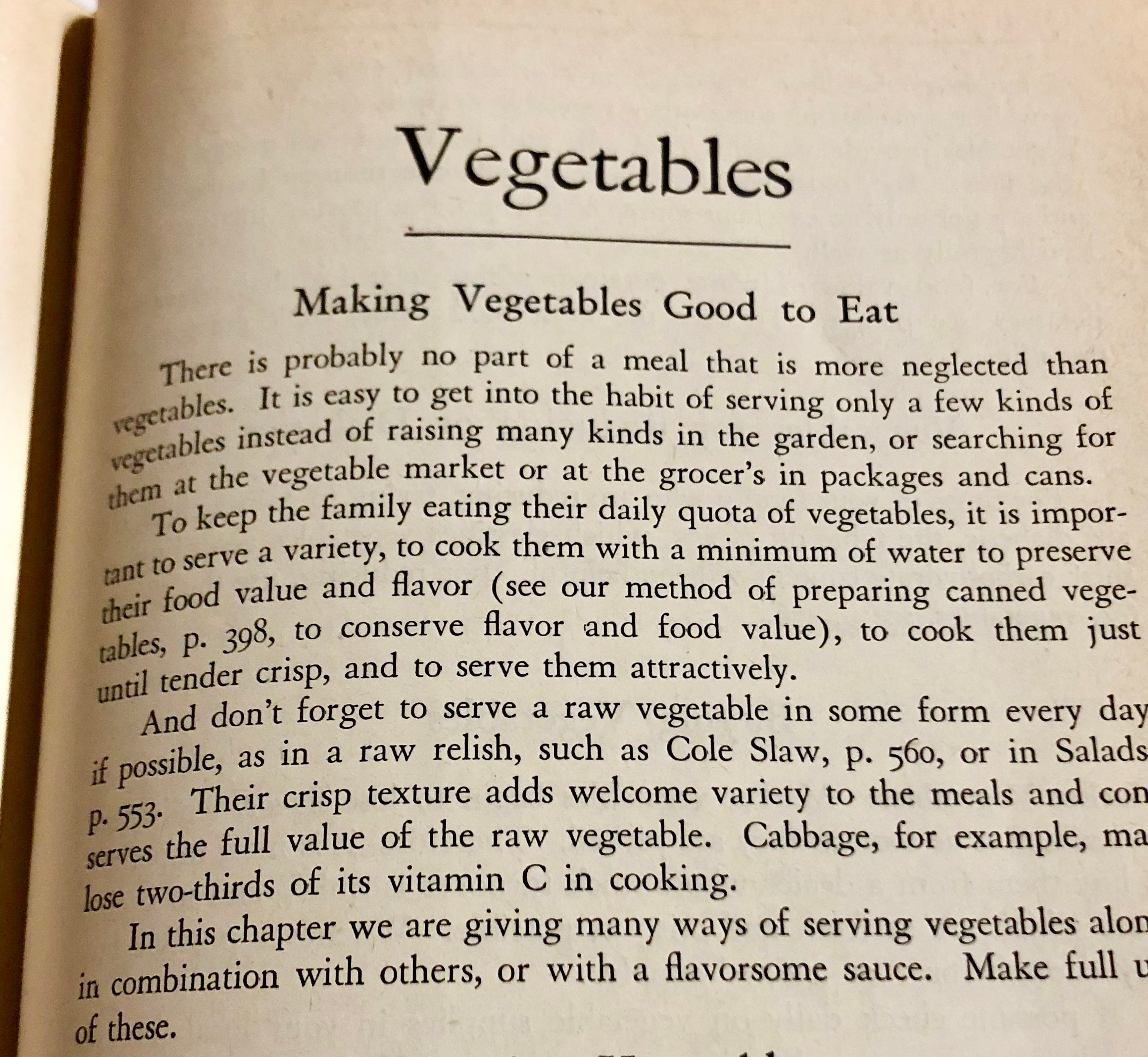The Good Housekeeping Cookbook 1944 7th Ed. Hardcover- with very cool inscription!
This is a 1944 revised edition Hardcover Good Housekeeping Cookbook published by Farrar & Rinehart, Inc.
It is in great condition-and is chock full (981 pages!) of vintage recipes, color photos, tested information, menu planning, cooking for a crowd, plus useful hints.
I've included in pictures 'Vegetables- making vegetables good to eat' just so you get an idea.
The binding and covers are strong. It is a tan and green plaid pattern but is missing the dust jacket. There are no rips , no tears or marks,no stains , no dog ears or notes- not even one bent page for a favorite recipe!!!
The inscriptions sealed the deal for me and might explain why...
On the inside cover is inscribed-
'To assure myself of getting good meal in the future, I give you my dear wife, this wonderful book.
Mr Louis Polzella Feb 7, 1945, Boston, Mass'
There is further inscriptions below the original as seen in pictures.
It is Mr Pozellas address as a Aviation Cadet Student ,Squad W Class 415, Amarillo,Texas.
So it is sadly possible being that it was war time that she never had a chance to use this book.
It measures 8 1/2" x 5 3/4" x 1 3/4"
Launched on May 2, 1885 in Holyoke, Massachusetts, Good Housekeeping magazine described its lofty mission as "to produce and perpetuate perfection — or as near unto perfection as may be attained in the household.”
Throughout its history, Good Housekeeping has been the go-to magazine for American women, providing them with news, trends, real-life and fiction stories, advice, recipes, and product recommendations.
Yet what sets Good Housekeeping apart from all other women's magazines is that its beauty, home organizing, cleaning, nutrition, cooking and home appliance, consumer electronic, and other product recommendations are based on the expertise of the Good Housekeeping Institute. And the thousands of recipes that are printed in the magazine, online, and numerous Good Housekeeping cookbooks are all triple tested in the Test Kitchen at the Good Housekeeping Institute.
Founded in 1900, the Good Housekeeping Institute was, at first, called the Good Housekeeping Experiment Station. The invention of electricity had introduced many new labor-saving home appliances but few consumers had any real knowledge of their operation and maintenance. With the goal of studying "the problems facing the homemaker and to develop up-to-date firsthand information on solving them," the staff at the GH Experiment Station tested products and housekeeping methods and published articles about their discoveries and observations. They also reprinted advice from readers who wrote them. One reader offered a cure for callouses (she used olive oil and cotton); another reader advised about how to launder lace drapes; and another gave tips about the best way to clean a meat chopper
Changes were taking place in American life during the first decade of the 20th century, and because of the Experiment Station's success with the magazine's readers, the time was ripe for extending the magazine's efforts to provide simpler and better methods for managing the home. Although the first article on electric cooking appeared in the magazine in 1899, very little space was given to the use of electric power in the home until 10 years later, when it began to be evident that housekeeping was entering a new era of progress, i.e., the machine age. Little was known about the new machines, and questions about them began to pour in to Good Housekeeping. The editors soon discovered that to answer the questions satisfactorily, the magazine had to begin a program of intensive investigation and research to develop firsthand information to pass along to the readers. Because there was no other source, the publishers in 1909 built a facility on the street level of the Good Housekeeping building in Springfield, Massachusetts, called the Good Housekeeping Institute.
The purpose and mission of the Institute was to serve the needs and interests of the homemakers and homes of the United States as no other institution of its kind ever had. The facility included a model kitchen, a domestic science laboratory, and test stations where the work was to be conducted under practical household conditions. Any product that withstood the investigation and experience of the Institute staff was eligible to be included in the newly developed list of "Tested and Approved" products to be published in the magazine.
The first installment of the "Approved" list appeared in the December 1909 issue and featured the inauguration of the "Good Housekeeping Tested and Approved Seal by the Good Housekeeping Institute conducted by Good Housekeeping Magazine." Twenty-one consumer products were listed in the issue and included various household appliances, such as a washing machine, refrigerator, gas range, and an electric iron. By the end of 1910, almost 200 products were qualified to carry the "Seal of Approval."
Shipping from United States
Processing time
1-3 business days
Estimated shipping times
- United States : 2 - 3 business days
I'll do my best to meet these shipping estimates, but can't guarantee them. Actual delivery time will depend on the shipping method you choose.
Customs and import taxes
Buyers are responsible for any customs and import taxes that may apply. I'm not responsible for delays due to customs.
Payment Options
Returns & Exchanges
I gladly accept cancellations
Frequently Asked Questions
Are these new items?
All items in my shop are vintage and antique meaning previously owned, loved and used.
I will disclose any condition issues to the best of my ability in the item description and ask that you review pictures and description prior to purchase.
Please contact me - I'll be happy to clarify and answer any questions.
Do you accept returns?
I do not accept returns or apply refunds
Please review item description and pictures prior to purchase or contact me with any questions
I’ll gladly provide any additional
information
If it is agreed upon between the seller and buyer that an item will be returned,it is the responsibility of the buyer to pay for return shipping. Once the item is received to the seller a refund of the purchase price only will be applied to the buyers account.
I ship quickly -1-3 business days-so I will only except a cancellation within 24 hours of purchase since I will be preparing the item for shipment in order to expedite your purchase
Why are shipping costs so high?
The shipping cost is determined by the postal service which is described below Due to the various sizes and weights of the items in my shop I unfortunately cannot offer free shipping
I utilize the USPS for shipping all packages and have found them to be the most economical and reliable
USPS has discontinued Regional Rate Box prices. This means that this mail class is no longer available
USPS uses Cubic Pricing rates which are determined by package dimensions and distance traveled instead of weight
